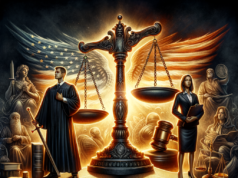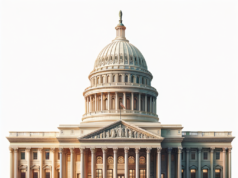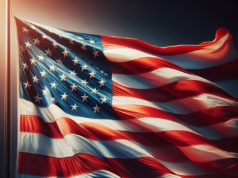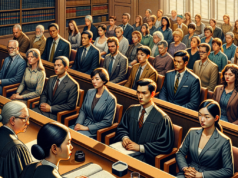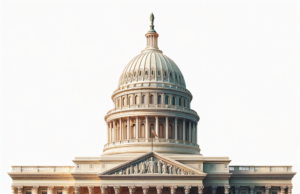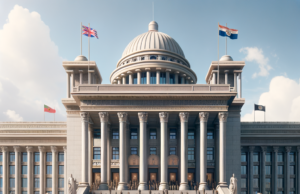Contents
- 1 Understanding the Historical Context of Gun Rights Advocacy in America
- 2 Key Factors Driving the Resurgence of Gun Rights Activism Today
- 3 The Role of Social Media in Amplifying Gun Rights Voices
- 4 Case Studies: Successful Campaigns by Gun Rights Advocacy Groups
- 5 The Impact of Legislation on the Gun Rights Movement’s Growth
- 6 Future Trends: What Lies Ahead for Gun Rights Advocacy in America
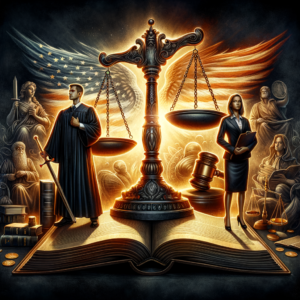 In recent years, the landscape of gun rights advocacy in America has undergone a remarkable transformation. Once a niche movement, it has surged into the mainstream, capturing the attention of policymakers, media, and the public alike. This article explores the historical context of gun rights advocacy, the factors driving its resurgence, the role of social media, successful campaigns by advocacy groups, the impact of legislation, and future trends that may shape the movement.
In recent years, the landscape of gun rights advocacy in America has undergone a remarkable transformation. Once a niche movement, it has surged into the mainstream, capturing the attention of policymakers, media, and the public alike. This article explores the historical context of gun rights advocacy, the factors driving its resurgence, the role of social media, successful campaigns by advocacy groups, the impact of legislation, and future trends that may shape the movement.
Understanding the Historical Context of Gun Rights Advocacy in America
Gun rights advocacy in America has deep roots, tracing back to the Second Amendment of the U.S. Constitution, which enshrines the right to bear arms. The historical context of this movement is intertwined with the nation’s founding principles, where firearms were seen as essential for self-defense, hunting, and resisting tyranny. Over the decades, the gun rights movement has evolved, influenced by various social and political factors, including the rise of the National Rifle Association (NRA) in the late 19th century and its subsequent role in lobbying against gun control measures. The movement gained momentum during the 1960s and 70s, particularly in response to civil rights protests and the Vietnam War, which fueled fears of government overreach. This historical backdrop sets the stage for understanding the current resurgence of gun rights advocacy in America.
Key Factors Driving the Resurgence of Gun Rights Activism Today
Several key factors are contributing to the renewed vigor of gun rights activism in contemporary America. The increasing polarization of political discourse has led many individuals to perceive gun ownership as a fundamental aspect of personal freedom and autonomy. High-profile mass shootings and subsequent calls for gun control have galvanized gun rights advocates, who argue that such measures infringe upon individual liberties and do little to address the root causes of violence. Additionally, the COVID-19 pandemic prompted a surge in firearm purchases, as citizens sought to protect themselves amid uncertainty. This spike in gun ownership has further energized advocacy groups, as new gun owners often seek to engage in the political process to safeguard their rights.
The Role of Social Media in Amplifying Gun Rights Voices
Social media has emerged as a powerful tool for gun rights advocates, enabling them to reach broader audiences and mobilize support more effectively than ever before. Platforms like Twitter, Facebook, and Instagram allow individuals and organizations to share information, organize events, and engage in discussions about gun rights. The immediacy and accessibility of social media have facilitated the rapid dissemination of pro-gun narratives, countering mainstream media portrayals that often focus on gun violence and regulation. Influencers within the gun rights community leverage these platforms to share personal stories, promote educational content, and rally supporters around specific causes. This digital landscape has transformed the way gun rights advocates communicate, making it easier to build coalitions and sustain momentum for their initiatives.
Case Studies: Successful Campaigns by Gun Rights Advocacy Groups
Several advocacy groups have successfully championed gun rights through strategic campaigns that resonate with the public. One notable example is the NRA’s “I Am the NRA” campaign, which personalizes the gun ownership experience by highlighting diverse stories of responsible gun owners. This initiative has helped to humanize the movement and counteract negative stereotypes. Another significant campaign is the “Shall Not Be Infringed” movement, which emphasizes the constitutional basis for gun ownership and has successfully mobilized grassroots support for pro-gun legislation in various states. Additionally, organizations like Gun Owners of America (GOA) have effectively lobbied against restrictive gun laws, showcasing the power of grassroots activism in influencing policy outcomes. These case studies illustrate the strategic approaches that advocacy groups employ to galvanize support and achieve their objectives.
The Impact of Legislation on the Gun Rights Movement’s Growth
Legislation plays a crucial role in shaping the trajectory of the gun rights movement in America. Recent years have seen a wave of pro-gun legislation at both state and federal levels, including measures that expand concealed carry rights, eliminate restrictions on firearm purchases, and promote constitutional carry laws. These legislative victories have emboldened advocates and attracted new supporters who view these changes as affirmations of their rights. Conversely, attempts to introduce stricter gun control measures often provoke fierce backlash from gun rights groups, leading to heightened activism and mobilization efforts. The dynamic interplay between legislation and advocacy underscores the importance of political engagement in the ongoing struggle over gun rights in America.
Future Trends: What Lies Ahead for Gun Rights Advocacy in America
Looking ahead, the future of gun rights advocacy in America is likely to be shaped by several emerging trends. As the demographic landscape shifts, younger generations of gun owners are becoming increasingly vocal about their rights, often utilizing social media to express their views. This generational change may lead to new strategies and messaging that resonate with a broader audience. Additionally, ongoing debates surrounding mental health, public safety, and personal freedom will continue to influence the discourse around gun rights. The rise of grassroots movements and local advocacy efforts may also play a pivotal role in shaping future legislation and public opinion. As the gun rights movement adapts to these evolving dynamics, it will remain a significant force in American political life.
The surprising rise of gun rights advocacy in America reflects a complex interplay of historical context, social dynamics, and political engagement. As advocates continue to harness the power of social media and grassroots activism, the movement is poised to influence the national conversation on gun rights for years to come. Understanding the factors driving this resurgence is essential for policymakers, stakeholders, and citizens alike as they navigate the ongoing debates surrounding firearms and individual liberties in the United States.



